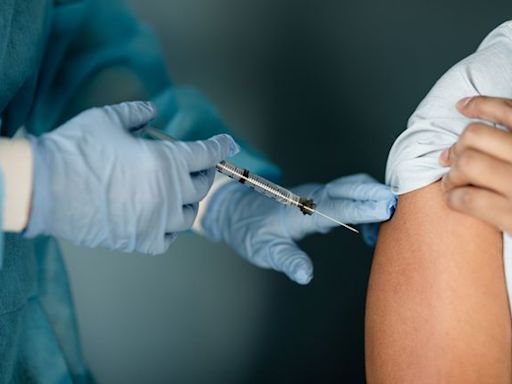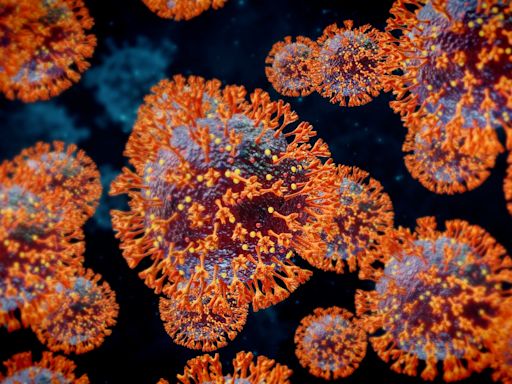Search results
- Health via Yahoo
Guide to 2024 Fall Vaccines: When to Get Your COVID, Flu, and RSV Shots
Vaccines for the fall and winter 2024–2025 season are now available. Generally, experts recommend COVID-19 and flu vaccines for most people and RSV vaccines for some. The vaccines are all safe to get together at the same time.
6 days ago
- Delaware Online | The News Journal via Yahoo
New XEC COVID-19 variant expected to become the dominant strain soon. What we know
Pfizer-BioNtech, Moderna and Novavax all have updated versions of the vaccine and are safe for use. Got a tip or a story idea? Contact Krys'tal Griffin at kgriffin@delawareonline.com. This article ...
7 hours ago
Aug 22, 2024 · Once exposed to COVID-19, it takes two to three days to show symptoms. This period is called the incubation period. Even before symptoms start, you can spread the virus through breathing and talking. You're most contagious when symptoms start and the virus level (viral load) in your body is highest.
Dec 11, 2023 · Infectious disease experts say that COVID-19’s peak infectivity is during symptom onset. During this time, people can spread the virus to others through sneezing and coughing. Once your symptoms get better, you’re less likely to spread COVID.
Aug 13, 2024 · The potential to be contagious with COVID-19 longer than other people and any additional precautions you should take to limit spreading the virus. The benefits of antiviral medication for COVID-19 ...
- Overview
- How long is someone contagious?
- When to be around people
- How to protect other people
- Caring for someone with COVID-19 without catching it
- Symptoms
- Recovery times
- Summary
How long a person is contagious with the coronavirus varies, and scientists do not have a precise answer that applies to every case. However, people may shed the virus for between 2–3 weeks.
The novel coronavirus, which causes the disease COVID-19, is highly contagious. Even people who do not have any symptoms can transmit the virus.
When in doubt as to how long they should isolate, a person should follow isolation guidelines, continue to wear face masks, and avoid close contact with others — even at the end of isolation.
This article will explain how long people may be contagious with COVID-19 depending on their individual circumstances. It will also provide information on what a person can do to protect those around them and explain the symptoms and recovery times associated with COVID-19.
Experts believe that the time from exposure to symptom onset, also known as the incubation period, is 2–14 days. However, symptoms typically appear within 4–5 days of exposure.
Different variants of the virus appear to have different incubation periods, with Omicron having a shorter incubation period than the earlier Alpha, Beta, and Delta variants.
One 2021 study included 129 people hospitalized with COVID-19.
The median length of time that participants continued to shed the virus was 8 days after first developing symptoms. At 15.2 days, the odds of continuing to shed the virus were less than 5%.
These results suggest that shedding may occur for longer than 2 weeks in some people with COVID-19. However, the study only included people who were receiving treatment in a hospital for moderate to severe COVID-19.
The 2021 study included immunocompromised people who may shed the virus for longer. It is currently not clear whether the result would be the same for people with mild or asymptomatic disease.
When a person develops symptoms or tests positive for COVID-19, isolating from others helps prevent the virus from spreading.
According to the Centers for Disease Control and Prevention (CDC), the minimum isolation period can vary depending on the factors listed below. When counting isolation days, remember that Day 0 is the day that a person first experiences symptoms or has a positive test result. Day 1 is the following day.
People who have been in contact with someone with COVID-19
People who believe that they have had exposure to COVID-19 should monitor themselves for symptoms and wear a high-quality mask indoors at home and in public for 10 full days after the exposure day. Even with a negative test result, it is important to continue these precautions. It can take 10 days for an infection to develop. If you develop symptoms, test yourself and follow isolation guidelines.
People who have COVID-19 or think that they have COVID-19
People should follow isolation guidelines based on their health status and the severity of their infection. Isolation periods can range from approximately 6 to 11 days or longer. A person must also continue isolating for at least 24 hours after their last fever. If a person still has a fever when they do not take fever medication, they must continue isolating. After isolation ends, wearing a high-quality mask is usually recommended during the period when a person may still be able to transmit the virus.
People who have had a severe case of COVID-19
People who have had severe symptoms of COVID-19 may need to isolate for up to 20 days after they first noticed them. A person should talk with a doctor for more information.
One of the challenges of caring for a person with COVID-19 is that by the time they have symptoms, they might have been contagious for a few days.
Nevertheless, a caregiver can reduce their exposure by taking the following precautions:
•Wear a face mask at all times while around the sick person, and ask the sick person to do the same.
•Try caring for the person through a door. Leave food outside the door, then walk away before they open the door.
•Help the person quarantine in an isolated part of the house.
•Use video chat to stay connected, rather than talking in person.
The symptoms of COVID-19 vary greatly from person to person. Some people experience few or no symptoms. However, for others, COVID-19 causes life threatening organ failure.
Most people develop symptoms within 2–14 days of exposure.
The most common early symptoms include:
•chills
•fatigue
•fever
The length of time it takes a person to recover from COVID-19 depends on many factors, including whether or not they develop symptoms, how severe any symptoms are, and whether or not they have any other medical conditions.
For most people, the symptoms of a COVID-19 infection will go away within a few days to a few weeks.
People with COVID-19 tend to be most contagious just before and just after the appearance of symptoms. However, some people may develop no symptoms at all. These people can still transmit SARS-CoV-2.
It is important to reduce the transmission of SARS-CoV-2 and the spread of COVID-19. Taking precautions such as wearing a face mask, improving indoor ventilation, and moving indoor activities outdoors can greatly reduce the risk of further spread.
Staying up to date with COVID-19 vaccines and boosters can prevent severe illness and hospitalization.
People should follow isolation guidelines and never assume that an absence of symptoms means an absence of COVID-19.
Jul 23, 2021 · COVID-19 is most contagious in the first week after exposure to the virus. Symptoms will typically develop during this week, around 4–5 days after exposure.
- Aaron Kandola
Mar 1, 2024 · This updated Guidance includes strategies to protect people at highest risk of getting seriously ill and provides actionable recommendations for people with common viral respiratory illnesses, including COVID-19, flu, and RSV.
Jun 14, 2024 · At a glance. Clinicians and public health professionals can find information and evidence on this page to evaluate patients infected with SARS-CoV-2, the virus that causes COVID-19. Key points.


